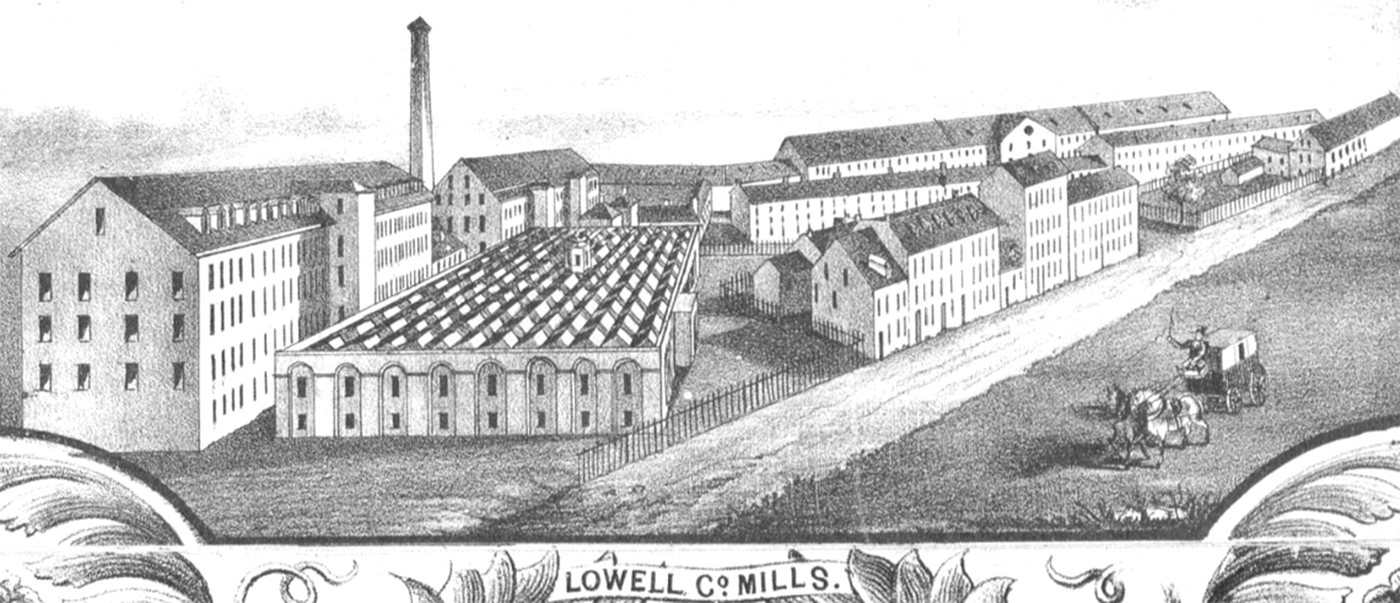The market revolution economic depended upon not just free-labor factories in the north, but slave-labor plantations in the south. By 1832, textile companies made up 88 out of 106 American corporations valued at over $100,000. These textile mills, worked by free labor, nevertheless depended upon southern cotton and the vast new market economy spurred the expansion of the plantation South.
By the early-nineteenth century, states north of the Mason-Dixon Line had taken steps to abolish slavery. Vermont included abolition as a provision of its 1777 state constitution. In 1804 New Jersey became the last of the northern states to adopt gradual emancipation plans. There was no immediate moment of jubilee, as many northern states only promised to liberate future children born to enslaved mothers. Such laws also stipulated that such children remain in indentured servitude to their mother’s master in order to compensate the slaveholder’s loss. James Mars, a young man indentured under this system in Connecticut, risked being thrown in jail when he protested the arrangement that kept him bound to his mother’s master until age twenty five. Pennsylvania’s emancipation act of 1780 stipulated that freed children serve an indenture term of twenty-eight years. Gradualism prompted emancipation but defended the interests of Northern masters and controlled still another generation of black Americans.
Quicker routes to freedom included escape or direct emancipation by masters. But escape was dangerous and voluntary manumission rare. Congress, for instance, made the harboring of a fugitive slave a federal crime by 1793. Hopes for manumission were even slimmer, as few Northern slaveholders emancipated their own slaves. For example, roughly one-fifth of the white families in New York City owned slaves and yet fewer than 80 slaveholders in the city voluntarily manumitted slaves between 1783 and 1800. By 1830, census data suggests that at least 3,500 people were still enslaved in the North. Elderly Connecticut slaves remained in bondage as late as 1848 and in New Jersey until after the Civil War.
Emancipation proceeded slowly, but proceeded nonetheless. A free black population of fewer than 10,000 at the time of the Revolution increased to 200,000 by 1810. Growing free black communities fought for their civil rights. In a number of New England locales, free African Americans could vote and send their children to public schools. Most northern states granted black citizens property rights and trial by jury. African Americans owned land and businesses, founded mutual aid societies, established churches, promoted education, developed print culture, and voted.
Nationally, however, the slave population continued to grow to a total of 700,000 in the early years of the nineteenth century. The growth of abolition in the north and the acceleration of slavery in the South created growing divisions between North and South. Slavery declined in the North, but became more deeply entrenched in the South, owing in great part to the development of a new profitable staple crop: cotton. Eli Whitney’s cotton gin, a simple hand-cranked device designed to mechanically remove sticky green seeds from short staple cotton, allowed southern planters to dramatically expand cotton production for the national and international markets. Technological innovations elsewhere—water-powered textile factories in England and the American northeast, which could rapidly turn raw cotton into cloth—increased demand for southern cotton and encouraged white Southerners to expand cultivation farther west, to Mississippi River and beyond. Slavery’s profitability had lagged in tobacco planting, but cotton gave it new life. Eager cotton planters invested their new profits in new slaves.
The cotton boom fueled speculation in slavery. Many slave owners leveraged potential profits into loans used to purchase ever increasing numbers of slaves. For example, one 1840 Louisiana Courier ad warned “it is very difficult now to find persons willing to buy slaves from Mississippi or Alabama on account of the fears entertained that such property may be already mortgaged to the banks of the above named states.”

Sidney & Neff, Detail from “Plan of the City of Lowell, Massachusetts,” 1850, via Wikimedia Commons.
New national and international markets fueled the plantation boom. American cotton exports rose from 150,000 bales in 1815 to 4,541,000 bales in 1859. The Census Bureau’s 1860 Census of Manufactures stated that “the manufacture of cotton constitutes the most striking feature of the industrial history of the last fifty years.” Slave owners shipped their cotton north to textile manufacturers and to northern financers for overseas shipments. Northern insurance brokers and exporters in the Northeast profited greatly.
While the United States ended its legal participation in the global slave trade in 1808, slave traders moved 1,000,000 slaves from the tobacco-producing Upper South to cotton fields in the Lower South between 1790 and 1860, generating upwards of $12,000,000 annually. This harrowing trade in human flesh supported middle-class occupations North and South: bankers, doctors, lawyers, insurance brokers, and shipping agents all profited. And of course it facilitated the expansion of northeastern textile mills.
Candela Citations
- American Yawp. Located at: http://www.americanyawp.com/index.html. Project: American Yawp. License: CC BY-SA: Attribution-ShareAlike